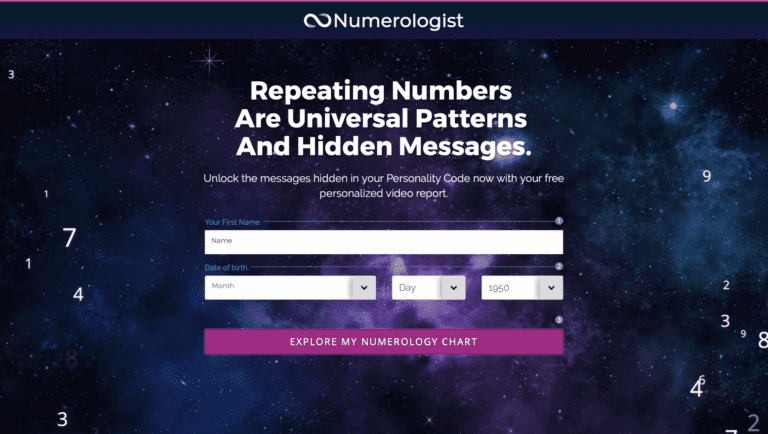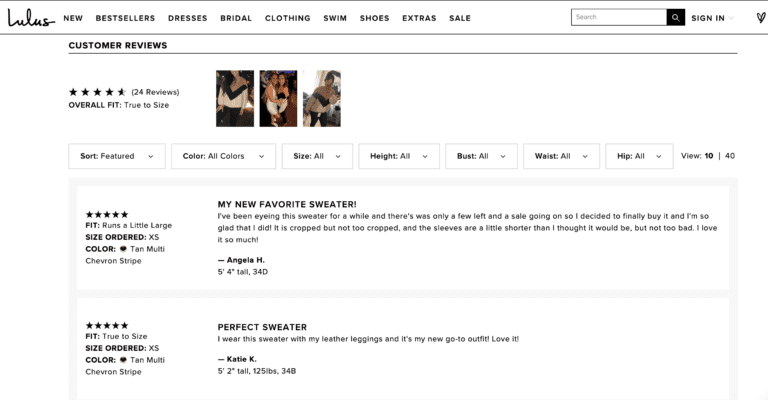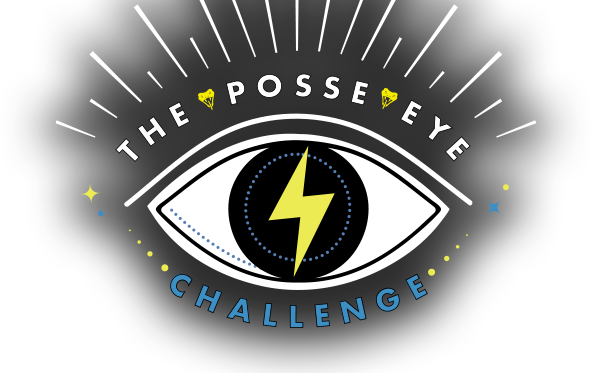No, there are no magical words that can instantly hypnotize your audience to take out their credit card and give you money…
But there are some proven psychological truths based on the study of us weird humans that can help make your copywriting exponentially more persuasive. Keep reading…
Hey guys! It’s Alex, and today I’m spilling the tea on 10 key psychological triggers to help you become insanely more persuasive with your copywriting.
These triggers are based on powerful and proven psychological concepts that you can use in your sales copy to provoke emotion and action by activating your customer’s “internal motivators”.
These triggers can be used anywhere in your copywriting — your sales page, emails, headlines, ads, and so on…
But you HAVE to make me a Posse promise – that you will only EVER utilize these copywriting tips to authentically and accurately communicate, add insane value and sell products and services that GENUINELY help people solve problems.
Do you promise? If we have a deal, leave me a comment below.
Now, many of these psychological triggers I learned from one of the top experts in the field of human persuasion — Dr. Robert Ciadlini, who wrote the bestselling book Influence: The Psychology of Persuasion.
If you haven’t read that book I definitely recommend it. In fact it’s one of my top 5 favorite books on copywriting and marketing (see all 5 here).
Now, the list I’m sharing with you today is only a handful of the Copy Posse Approved psychological triggers I train on inside my live copywriter coaching program — the Copy Posse Launch Pad.
It’s currently closed for enrollment, but if you don’t want to wait to ignite your copywriting business, you can get immediate access to the insider recordings, templates, guides and bonuses in the Copy Posse Launch Files.
And, of course, don’t forget to check back here weekly for free copywriting tips, tutorials, and exercises to take your copy skills to the next level. I release a new article every single Wednesday, and I’ve had many of my global posse get clients and paid writing gigs from simply reading my posts and watching my YouTube Channel. Which makes me so so so so happy.
Alright, now let’s dive in shall we. Here are 10 Copy Posse approved psychological triggers to ethically persuade and influence with your copywriting
#1. Reciprocity
It’s a basic law of social psychology that we often feel the need to give back the value we receive from others. If you scratch my back, I’ll scratch yours. Simple as that.
In his book, Cialdini talks about the universal tendency for human beings to feel compelled to repay or reciprocate after an act of kindness or generosity by another.
You see this rooted in cultures around the world — at weddings, between neighbours, in business relationships… and it’s also no stranger in the world of marketing. The trigger or reciprocity is used when you incentivize prospects to take a desired action by giving them something of value first.
Think about it: this concept is baked into every single optin page used for lead generation.
I’ll give you something really cool and free – all ya gotta do is enter your email address and you’ll be showered with free value and amazing content. Btw, it really should be amazing guys or else the rule of reciprocity will backfire in your face.
It could be a complimentary 30-minute assessment call if you’re a coach. Or a free trial for your software or subscription service — such as Spotify and YouTube Premium’s 30-day trials. You even see non-profit organizations do this by giving donors free merchandise in return for their donation, increasing the likelihood that they will donate again.
So in your copywriting, think – how can I add so much value that my prospects feel INSPIRED to reciprocate.
#2. Personalization
Using personalization in your marketing is a powerful psychological trigger. It doesn’t only keep people’s attention, but it also makes them feel more in control, makes them more receptive and reduces their perception of information overload.
There are a lot of ways to personalize your copywriting. For starters… using your reader’s first name in your sales pages, emails and subject line.
I know, I know – everyone KNOWS this is just an automated merge field BUT, before you go writing it off, according to Campaign Monitor, using a reader’s first name in a subject line makes an email 26% more likely to be opened!
But beyond this classic case of personalization, you can use marketing tools to further customize a user’s journey with your brand and products. Numerologist does this very well by giving their new subscribers beautiful and engaging personalized video Numerology reports based on their full name and date of birth.
Another example is NOOM, a custom weight loss program that lets you create your own profile before buying a plan, so you can pick the one that’s right for you.
And, you heard it here, you 100% should be personalizing your copywriting based on your audience’s specific actions, interests and engagement habits.
Marketing is no longer about spraying ONE marketing message all over the internet to everyone. The future of effective marketing will be sending behaviour-based emails in REAL TIME to your subscribers.
In fact, internet users are expecting you to KNOW their patterns! They want relevant content 100% of the time, and they’re often not very forgiving of blatant, non-personalized marketing.
Increasing personalization in your messaging across all channels can lead to a 500% increase in consumer spending. (Source) Um, excuse me?!
So, copywriters, as you’re writing sales pages, email sequences and video scripts, take time to consider WHO is consuming this content and how you might want to adapt these messages for different audience segments.
#3. Reason Why
A four year-old that follows you around the house asking you “Why?” after anything and everything you say is – albeit annoying – a reflection of a fundamental human desire to need to understand the rationale behind a person’s actions or opinions in order to BELIEVE IT.
Yes, that’s right, our brains are far more likely to believe something is true, real or legit when a reason or justification is given.
In fact, Ellen Langer, a psychology professor at Harvard, conducted a study on whether or not giving a “reason why” influenced people’s decision to allow strangers to cut in line while waiting for the Xerox machine in a busy library.
Her finding were incredible. When a stranger went up and asked the first person in line…
“Excuse me, I have 5 pages. May I use the xerox machine?”: 60% of them said yes. Not bad.
She then tested the same question, but using a Reason Why…. “Excuse me, I have 5 pages. May I use the xerox machine, because I’m in a rush?”: A staggering 94% of people said yes!!
But here’s where it gets REALLY juicy. She then changed the “Reason” from something legit – being in a rush – to no real reason at all…
“Excuse me, I have 5 pages. May I use the xerox machine, because I have to make copies?”: Still a massive 93% said yes.
Isn’t’ that nutty!?! I love humans. We’re so weird.
Simply using the word “because” – no matter the reason –resulted in significantly more yesses.
So in your sales copy, it’s always wise to include a reason for why you’re selling a product, why you’re giving a discount, and why you’re limiting the sale or using any sort of scarcity…
Because you need it to be BELIEVABLE in the minds of your prospects.
#4. Commitment & Consistency
In his book, Robert Cialdini also wrote on the principle, which is based on the human need to be seen as consistent. This means that once we’ve publicly committed to something or someone, we’re much more likely to follow through on it to avoid looking flakey, unreliable or inconsistent.
In marketing, this principle can be applied by encouraging prospects to make commitments that gradually increase in scale. It’s why questions work well in copywriting. You want your audience to subvocalize the word YES as they begin their journey with you. It’s a tiny commitment that can be the starting point of a lot more yesses.
Are you ready to learn highly paid copywriting skills, write an irresistible portfolio and ignite your copywriting business this year? Click here to get access to the Copy Posse Launch Files. *wink*
Once your prospects takes ANY sort of positive action or makes a commitment – no matter how seemingly insignificant – they are more likely to make another. Simple as that.
This is also why quizzes work so well. Once clicking to start a quiz, a human has the inherent need to finish it. Could you imagine Leaving a quiz after answering only one question? That would be crazy and you’d never find out which Harry Potter character you are!
To illustrate this psychological trigger, in his book, Cialdini referenced the work of social psychologist Steven J Sherman. Sherman conducted a survey asking neighborhood residents to predict what they would say if they were asked to spend three hours canvassing door to door for the American Cancer Society.
Not wanting to look bad, many of these residents said that they would in fact volunteer if asked. Well, what do ya know, a few days later, an actual representative of the American Cancer Society did call and ask for neighbourhood canvassers. As a result, there was a whopping 700% increase in volunteers because that initial conversation took place.
So how can you use messaging and marketing tools to get more micro commitments early on from your prospects?
#5. Social Proof
There’s no doubt that social proof is a powerful psychological trigger in copywriting and marketing. Seeing real evidence of other people using and liking products makes us a bazillion times more likely to believe it’s a good product and trust the brand.
In fact, according to a study by OptinMonster, 97% of consumers say online reviews impact their purchasing decisions.
The average consumer reads 10 online reviews before making a purchase decision.
That’s why, as a copywriter, you should also feature REAL testimonials, reviews or any other user-generated content on your sales pages, landing pages and ads.
For example, Lulus, a clothing brand, includes photos of their actual customers wearing Lulus products on their website. These photos also indicate their information like body weight, built, and height… as well as testimonials about how each product fits. These reviews are effective, specific and 100% believable.
#6. Common Enemy
Sociologist Georg Simmel said it best when he stated that “Nothing unites a nation, or any group of people for that matter, quite like having a common enemy.”
No, I’m not saying that you should go and get all political in your copywriting – that will maj backfire – but, rather, rally your audience around a common cause, viewpoint, or belief that aligns with their identity.
A research study by Psychology Professor Dr. Mark Landau indicates that “People have a basic need for coherence, or for things to make sense.”
They want to belong to a group who views the world in the same way they do. Communicating a common enemy in your copywriting is a great way to create this sense of belonging.
But, plot twist, the “enemy” doesn’t have to be a person…
It can be anything that stands in opposition to what your audience stands for.
For example, to organic and sustainable food advocates, the “enemy” could be processed and unnatural foods. To people with knee issues, it could be high-impact workouts. To the health industry, it could be crash or short term diets.
You can use this psychology trigger in your copy by calling out that common enemy and positioning your product as the solution that stands against it!
#7. Authority
Another psychological trigger researched by Cialdini is the principle of authority. It’s the tendency for people to accept an opinion, product or service if it is supported by a perceived expert, authority figure or globally recognized platform.
For example, anytime you see a doctor, scientist, celebrity or accredited professional endorse a product or service, the Authority principle is at play.
In copywriting this can be showcased through credible stats, scientific proof or press coverage… like when you see the “As Seen On” logos on a website or sales page.
Even social follower count lends a huge amount of authority to content creators. You can’t deny that.
Showcasing authority makes you look legit and helps you gain your audience’s trust. This is why some big brands pay tons of money to get their product endorsed by a famous personality or influencer. For instance, George Clooney for Nespresso. Cardi B for Pepsi. And that all-time famous selfie by Ellen DeGeneres at the Oscars in 2014? That was a big moment for Samsung.
#8. Anchoring & Priming
In Robert Cialdini’s second book, Pre-suasion, he talks about the “focusing effect” or “focusing illusion”… which refers to our natural attention bias to rely more heavily on the FIRST piece of information we receive when making decisions.
It is in fact WHY first impressions are everything – even if we’re not consciously aware of that bias.
You can utilize the little known psychological trigger in your marketing and messaging through something called Anchoring and Priming – exposing your audience to information BEFORE the buying decision that will increase their likelihood of saying yes later on.
In a study by marketing researchers Naomi Mandel and Eric Johnson, two different versions of an Online Sofa Website were shown to the subjects – with only one key difference. One version showcased fluffy clouds in the background and another showcased pennies.
What they found was the consumers who were anchored with the cloud imagery were more willing to pay for comfort. Those who saw the pennies were far more likely to select a more affordable option.
Cialdini sums it up best with this quote — “If you want people to choose a bottle of French wine, first expose them to French background music before they decide.”
So, as a copywriter, think – how can you get your audience to be more receptive to your product, solution or features by exposing them to messaging that anchors and primes, first?
#9. Specificity
Specificity is such a simple yet powerful psychological trigger and there are two very easy ways to use it:
One — when using story in copywriting, be as specific as possible and share real emotions and pain. Being specific in your experiences will make you audience FEEL something and, therefore, feel more connected to you and what you’re selling.
When you know exactly who your Avatar is, and you speak to them directly – without being vague, Universal or mainstream, you actually become infinitely more relatable to the people who actually matter! Remember you try to appeal to everyone, you appeal to no one.
Next, as much as possible, use specific numbers when communicating amounts, lists or figures.
I’m not saying you should bombard your readers with detailed stats throughout your copy, but specific numbers can go a long way.
Presenting numbers exactly as they are – rather than rounding up – can build trust and also evoke curiosity. For example — sharing a stat like a “63.7 % success rate” is more believable than using a “64% success rate” in your copy. Or saying that you have 9,984 happy customers, instead of 10,000.
Got it?
#10. Storytelling
I already hinted at this in #9, but it’s SO freaking powerful it deserves it’s own place on this list. The human mind is hard-wired to pay attention to and understand stories. It’s the oldest form of human communication yet new stories are being told every single day.
According to story analyst Lisa Cron in her book, Wired For Story: the regions of the brain that process the sights, sounds, tastes, and movement in real life are activated in the exact same way when we’re engrossed in a compelling narrative.
So if you can use captivating narratives and storytelling structures in your sales letters, landing pages, campaigns, and website copy — you will create MADE relatability, engagement, connection and trust with your prospect.
Watch This Instead
That wraps up my list of 10 psychological triggers to help you become insanely more persuasive with your copywriting.
Leave me a comment below if you found this article helpful. Thank you so much for reading and subscribing to my YouTube Channel. I’ll be back next week with a new post.
Till then, I’m Alex. Ciao for now!













2 Comments. Leave new
Thanks alot
Many thanks!